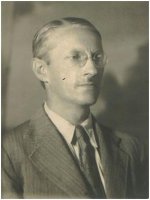James Jobling
Well-known member

Eponyms and other names in South American journals
I attach further eponyms and other queries from journals I have been unable to access. Again, apologies for rather a long list, but new and valuable information will be acknowledged in the HBWAlive Key.
●Boletim do Museu de Biologia “Prof. Mello-Leitão”. Ser. Divulgacao. Santa Teresa
1965 Phaethornis pinheiroi Ruschi, 22 [?24], pp. 1+
1975 Phaethornis pretrei schwarti Ruschi, 82 [?83], pp. 1+
1975 Threnetes cristinae Ruschi, 83 [?82], pp. 1+
1978 Ramphodon naevius freitasi Ruschi, 93, pp. 1+
●Boletim do Museu Paraense Emilio Goeldi. Pará.
1993 Celeus torquatus pieteroyensis Oren, Zool., 8 (1992), pp. 385+
●Boletín de la Sociedad Venezolana de Ciencias Naturales. Caracas.
1976 Crypturellus obsoletus knoxi Phelps, 32, p. 16
1977 Todirostrum margaritaceiventer breweri Phelps, 33 (134), p. 33
1987 Picumnus squamulatus lovejoyi Phelps & Aveledo, 41 (144), p. 17
1987 Phacellodomus rufifrons castilloi Phelps & Aveledo, 41 (144), p. 20
1988 Amazilia cupreicauda laireti Phelps & Aveledo, 42 (145), p. 7
1991 Cymbilaimus lineatus brangeri Aveledo & Perez, 44, p. 21
●Hornero. Revista de la Sociedad Ornitologica de la Plata. Buenos Aires.
1933 Columba livia caveae Marelli, 5, p. 195
●Lozania. Acta Zoologica Colombiana. Bogota.
1995 Zonotrichia capensis bonnetiana Stiles, 66, p. 5
●Papéis Avulsos do Departamento de Zoologia. Secretaria de Agricultura. São Paulo
1962 Neomorphus geoffroyi maximiliani Pinto, 15 (22), pp. 299+
●Poeyana. Revista Zoológica Cubana. La Habana.
1971 Xiphidiopicus percussus gloriae Garrido, 83, p. 6
●Revista do Museu Paulista. São Paulo.
1938 Crypturornis soui lyardi Miranda-Ribeiro, 23 (1937), p. 767
●Revista de la Sociedad Científica del Paraguay.
1941 Crotophaga ani lapchinskyi Podtiaguin, 5 (5), pp. 15, 90
●Revista de la Sociedad Mexicana de Historia Natural. Mexico.
1966 Amazilia viridifrons wagneri Phillips, 25 (1964), pp. 217+
Thanks in advance to all contributors.
I attach further eponyms and other queries from journals I have been unable to access. Again, apologies for rather a long list, but new and valuable information will be acknowledged in the HBWAlive Key.
●Boletim do Museu de Biologia “Prof. Mello-Leitão”. Ser. Divulgacao. Santa Teresa
1965 Phaethornis pinheiroi Ruschi, 22 [?24], pp. 1+
1975 Phaethornis pretrei schwarti Ruschi, 82 [?83], pp. 1+
1975 Threnetes cristinae Ruschi, 83 [?82], pp. 1+
1978 Ramphodon naevius freitasi Ruschi, 93, pp. 1+
●Boletim do Museu Paraense Emilio Goeldi. Pará.
1993 Celeus torquatus pieteroyensis Oren, Zool., 8 (1992), pp. 385+
●Boletín de la Sociedad Venezolana de Ciencias Naturales. Caracas.
1976 Crypturellus obsoletus knoxi Phelps, 32, p. 16
1977 Todirostrum margaritaceiventer breweri Phelps, 33 (134), p. 33
1987 Picumnus squamulatus lovejoyi Phelps & Aveledo, 41 (144), p. 17
1987 Phacellodomus rufifrons castilloi Phelps & Aveledo, 41 (144), p. 20
1988 Amazilia cupreicauda laireti Phelps & Aveledo, 42 (145), p. 7
1991 Cymbilaimus lineatus brangeri Aveledo & Perez, 44, p. 21
●Hornero. Revista de la Sociedad Ornitologica de la Plata. Buenos Aires.
1933 Columba livia caveae Marelli, 5, p. 195
●Lozania. Acta Zoologica Colombiana. Bogota.
1995 Zonotrichia capensis bonnetiana Stiles, 66, p. 5
●Papéis Avulsos do Departamento de Zoologia. Secretaria de Agricultura. São Paulo
1962 Neomorphus geoffroyi maximiliani Pinto, 15 (22), pp. 299+
●Poeyana. Revista Zoológica Cubana. La Habana.
1971 Xiphidiopicus percussus gloriae Garrido, 83, p. 6
●Revista do Museu Paulista. São Paulo.
1938 Crypturornis soui lyardi Miranda-Ribeiro, 23 (1937), p. 767
●Revista de la Sociedad Científica del Paraguay.
1941 Crotophaga ani lapchinskyi Podtiaguin, 5 (5), pp. 15, 90
●Revista de la Sociedad Mexicana de Historia Natural. Mexico.
1966 Amazilia viridifrons wagneri Phillips, 25 (1964), pp. 217+
Thanks in advance to all contributors.







